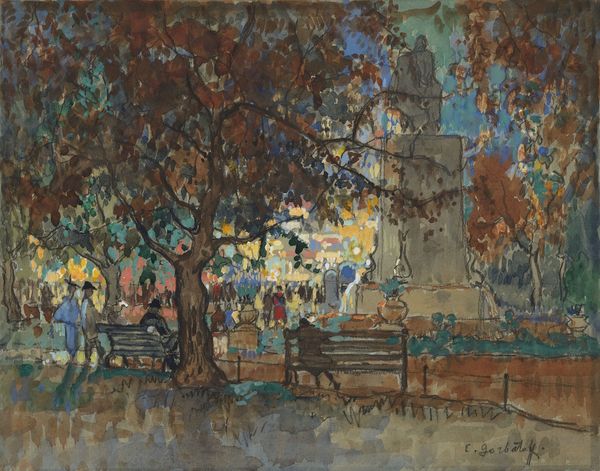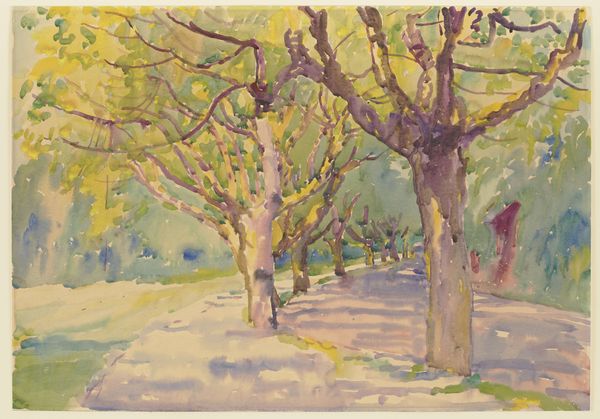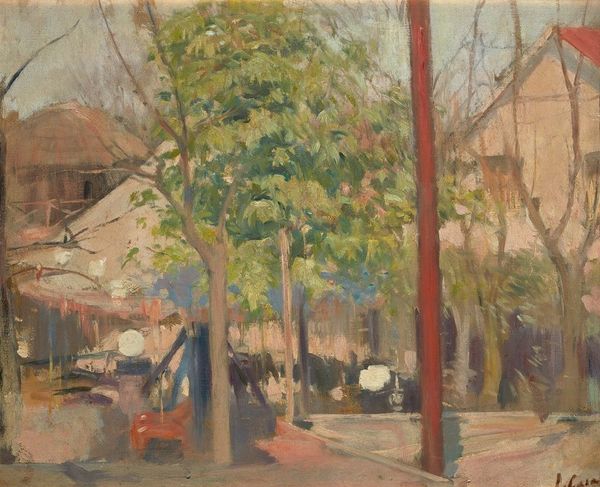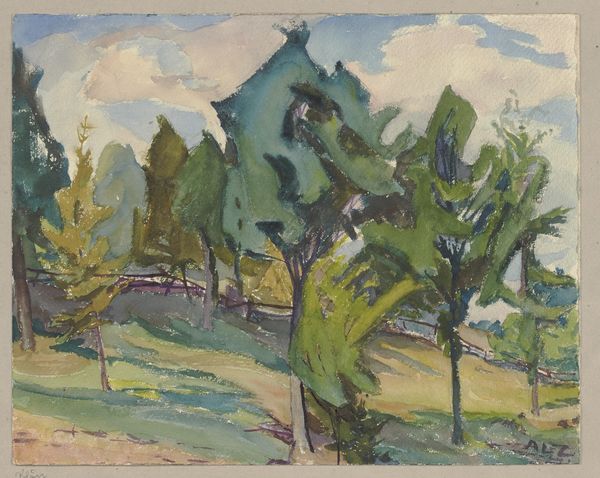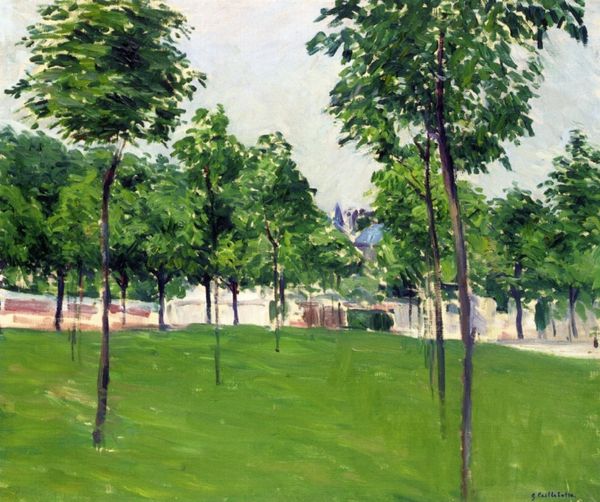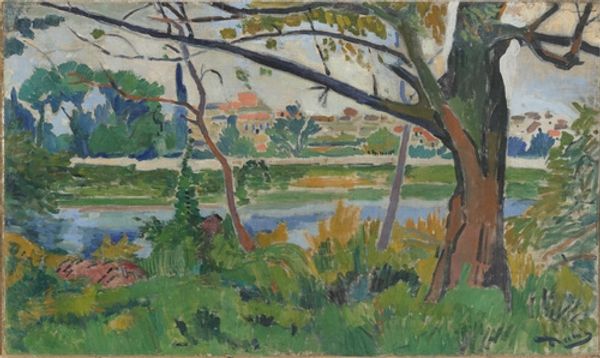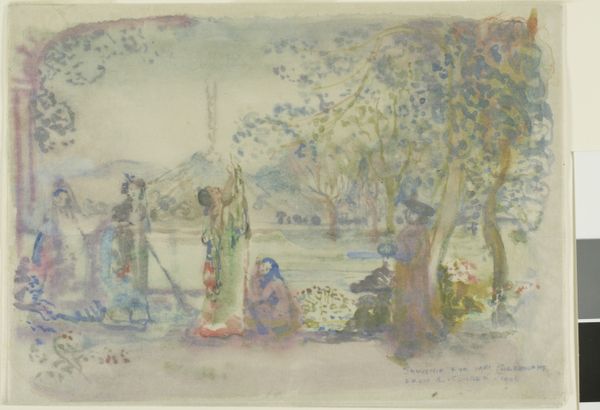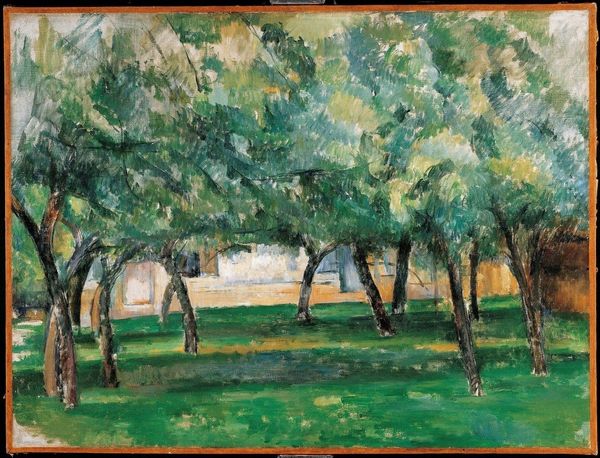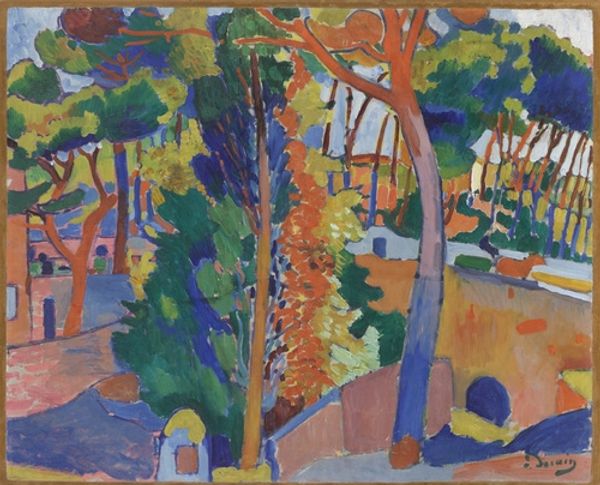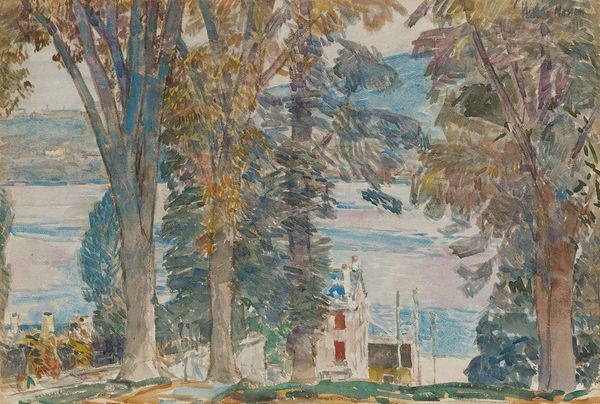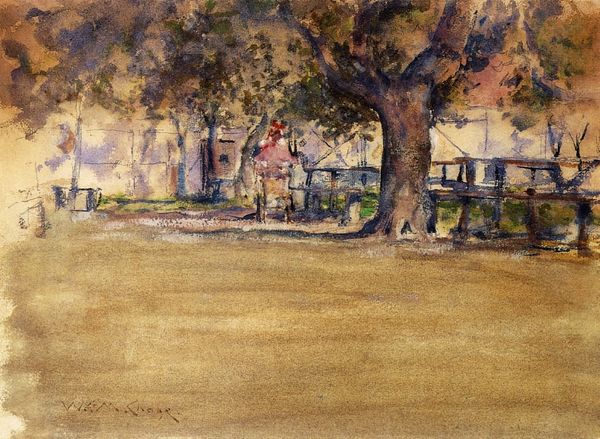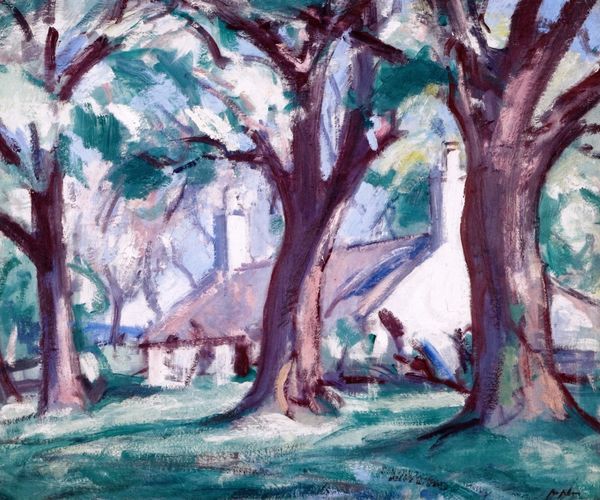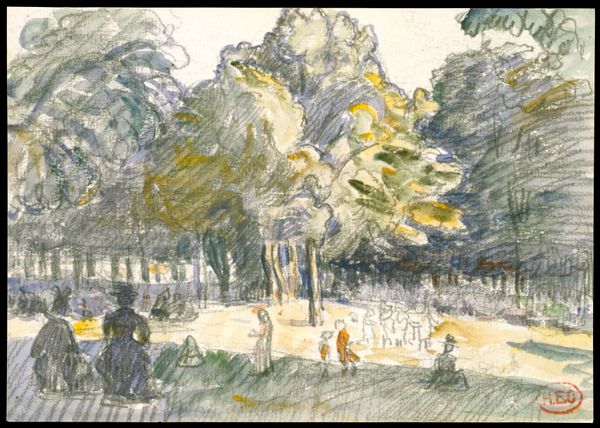
painting, plein-air, watercolor
#
painting
#
impressionism
#
plein-air
#
landscape
#
impressionist landscape
#
oil painting
#
watercolor
#
genre-painting
Copyright: Public domain
Editor: Here we have Hugo Mühlig's "Poplar Grove," it looks like from 1906, a watercolour painting showing an outdoor scene. I find the colour palette so muted, it really evokes a melancholic feeling in me, but it also invites contemplation. What do you see in this piece, looking at it through an activist lens? Curator: What I notice immediately is the setting: a public space, seemingly designed for leisure. Who is granted access to these spaces? Think about the historical context of early 20th century Europe; access to leisure activities and spaces was heavily shaped by class, gender, and race. Editor: So, you are suggesting this idyllic scene might not be so idyllic for everyone? Curator: Exactly. Who are the figures occupying this space, and who is conspicuously absent? The style, reminiscent of impressionism, can romanticize everyday life, obscuring underlying power structures. This location presents itself as available for the public, and what does public really mean, when social structures of race and class affect who gets to rest on those benches? Editor: I hadn’t considered the perspective of who is absent. The lack of diversity, especially given this is supposedly a public space, now strikes me. Curator: And consider Mühlig’s positionality as the artist: how does his own social context shape his perception and representation of this “public” space? Is he actively engaging with questions of social inequality, or is he simply capturing what he sees, reinforcing existing norms? Editor: It’s eye-opening how looking at this landscape through a social justice lens brings so many new questions. It goes beyond appreciating the surface aesthetics. Curator: It reminds us that art is never truly neutral; it’s always participating in a broader social and political conversation. And asking such questions moves us closer to inclusivity when interacting with any piece.
Comments
No comments
Be the first to comment and join the conversation on the ultimate creative platform.
